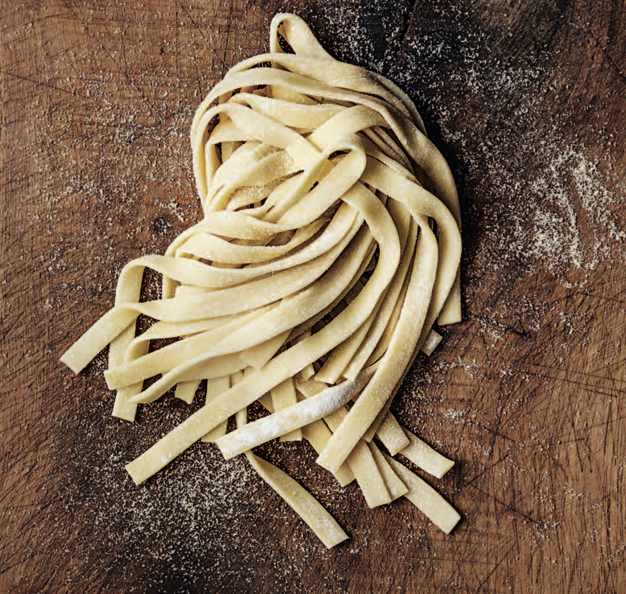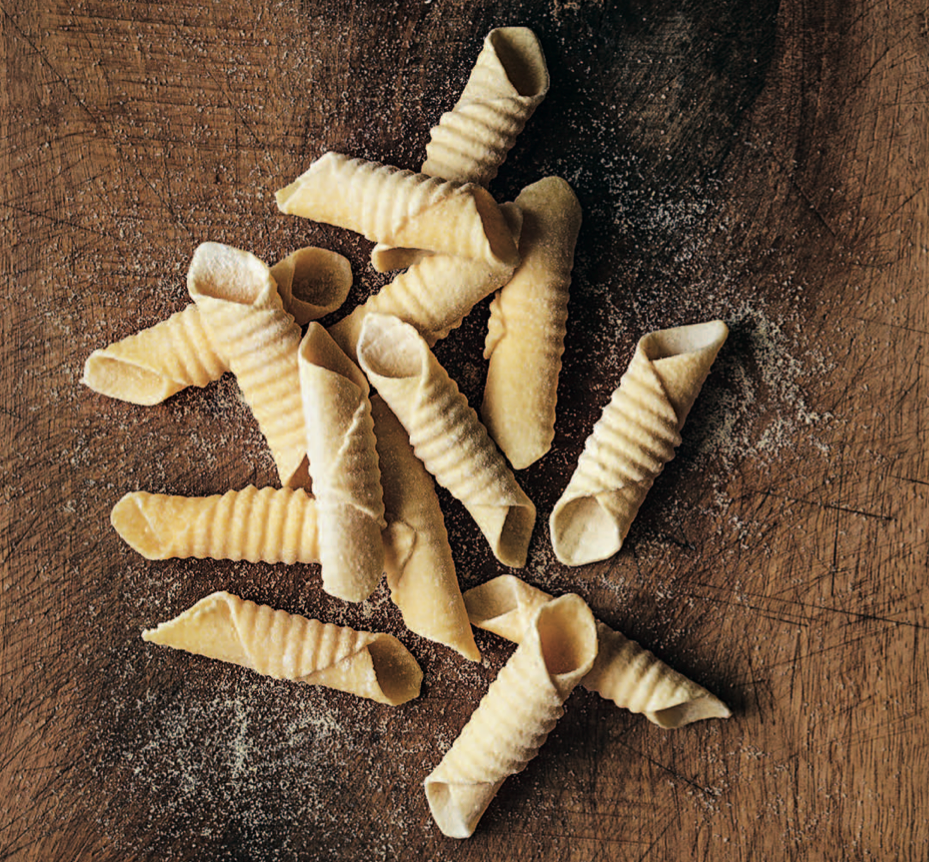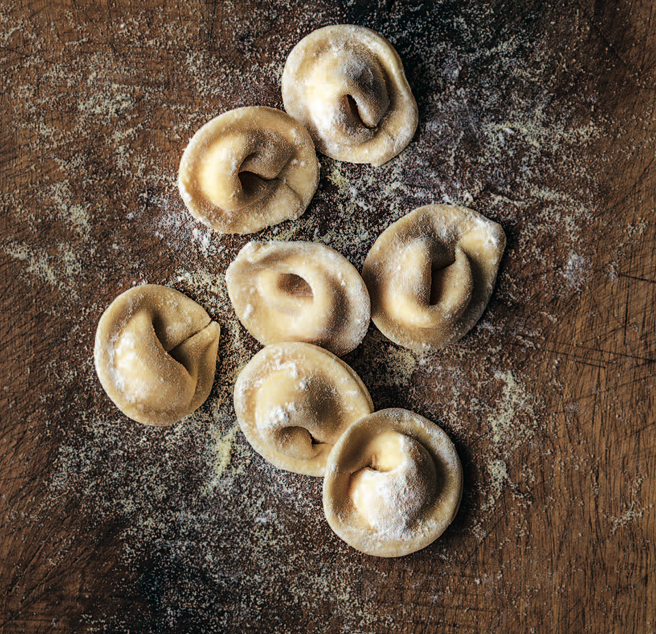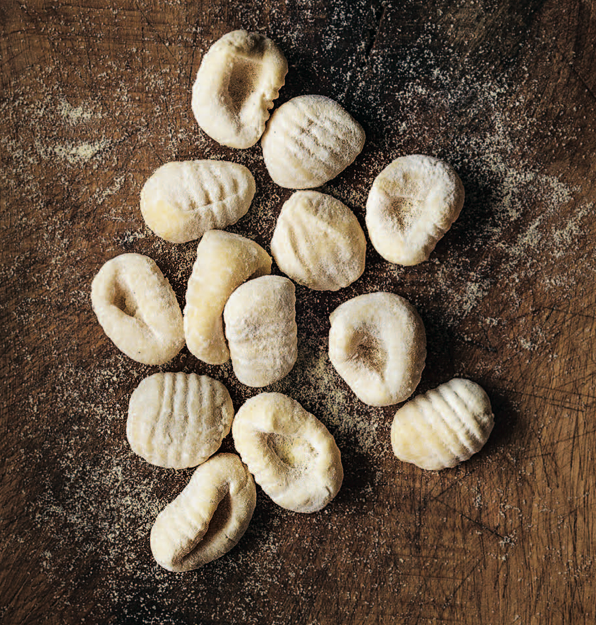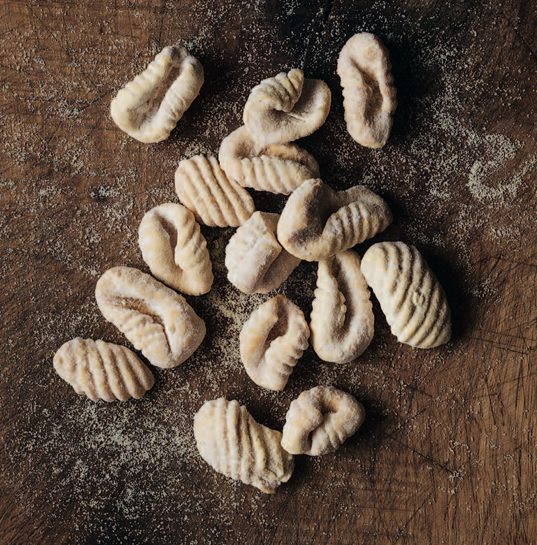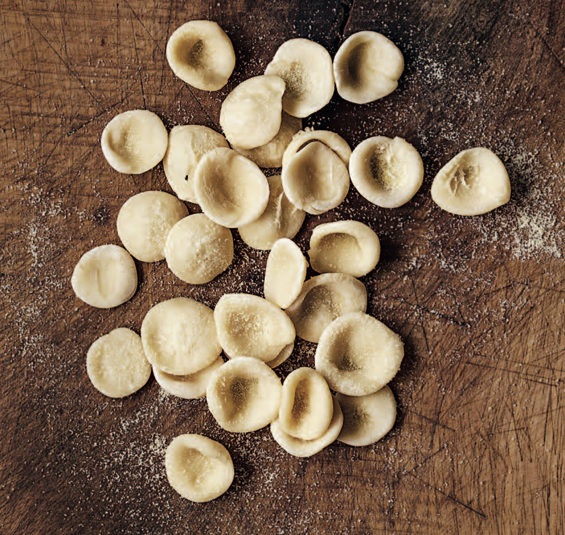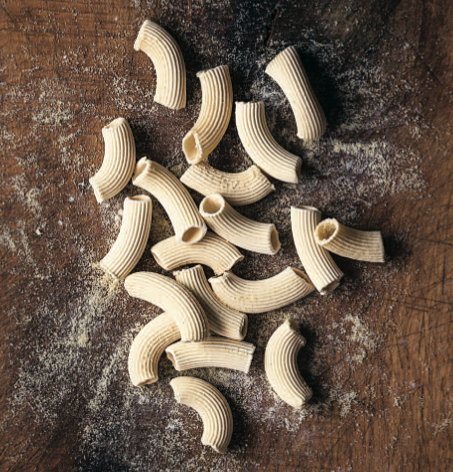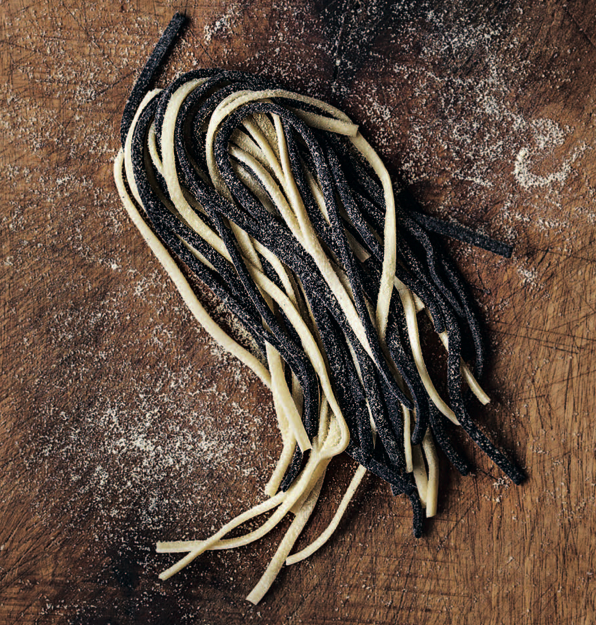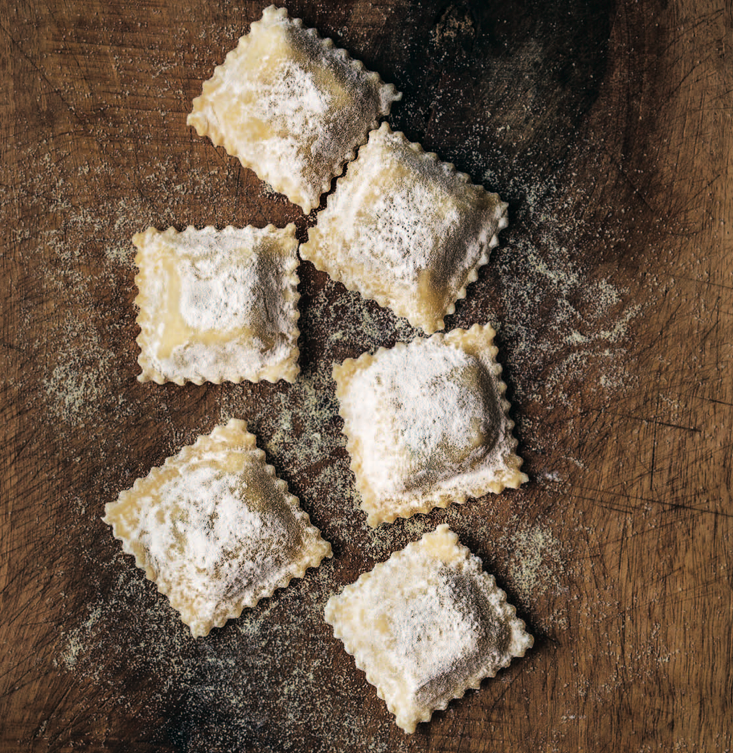9 Pasta Forms Every Chef Should Memorize
We may receive a commission on purchases made from links.
We recently sat down with Food & Wine Best New Chefs Andy Ticer and Michael Hudman of Memphis' Andrew Michael Italian Kitchen to talk about their recently released cookbook, Collards & Carbonara. It's a tribute to their Italian heritage and Southern roots not to be missed in this fall's cookbook lineup. Earlier, they gave us a sneak peek of a wonderful grilled vegetable salad — with a dressing you'll make over and over again. And now we bring you their kinda badass guide to pasta shapes. We're oftentimes torn between using garganelli, cavatelli and malfatti with our pestos and ragus. That is when we can keep it all straight. Here, two of our favorite dudes from Memphis set the record straight.
Fettuccine
Fettuccine literally translates to "little ribbons" in Italian. We roll the dough into long, thin sheets before cutting it. We love using this versatile shape with meaty sauces like white pork or salami ragu, or simply, with lemon, herbs and spring vegetables.
Garganelli
Small tubes of grooved fresh pasta, garganelli are fun to make: You start with small squares of fresh pasta and then roll them around a pencil to create tubes. As with the gnocchi, we roll the surface over a grooved wooden board to create nooks where the sauce can collect.
Tortellini
In Italian legend, the shape of tortellini was modeled after Venus's navel. You don't need any special equipment to make them, just a bit of patience. We like to stuff these little pasta pillows with puréed local vegetables and serve them in a flavorful broth or brown butter sauce.
Gnocchi
These little potato dumplings are always on our menu at AMIK in one form or another. We have a special board on which we roll the finished dumplings to create grooves that catch the sauce.
Malfatti
The Italian word "malfatti" means "poorly made" or "misshapen." We like the notion that not all food needs to be perfect to be delicious, so we purposely make our malfatti into slightly different sizes. Our favorite dough for malfatti is made from pumpkin puree, which we make in the fall and winter when we get fresh pumpkins from our local farm.
Orechiette
Resembling little ears, the indentations in this small coin-sized pasta help collect the sauce. We use a sturdy dough made from semolina flour to help the pasta stand up to hearty sauces and meats.
Lumache
Lumache is the Italian word for "snails," which this extruded pasta resembles. To make lumache by hand, you'll need a pasta extruder or extruder attachment for a heavy-duty stand mixer. You can generally substitute dried lumache or medium-sized pasta shells in recipes calling for homemade lumache, but be sure to follow the package directions for cooking times.
Chitarra
The word chitarra refers both to the pasta shape- thin, square shaped strands- and to the tool used to shape it- a wooden frame with a series of steel wires stretched tight across it. The wires resemble the strings of a guitar, or "chitarra" in Italian. You can generally substitute dried spaghetti in recipes calling for fresh chitarra, but be sure to follow the package directions for cooking times.
Ravioli
Our families put aside one day a week to make ravioli, setting out all of the ingredients and equipment on the large kitchen table and then working together to make each family's weekly supply. You might say that ravioli is in our blood, and we make versions of it often in our restaurant, filing it with mixtures of ground meat and seasonings, bold vegetable purées, and other fillings.


